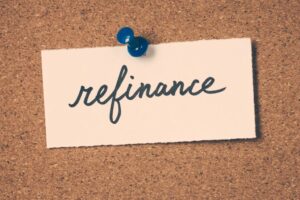When you go shopping for anything, it’s a good idea to find the best product for a reasonable price. Products like these might include a new furniture set, a new car, workout equipment, a new kitchen appliance, or maybe even a ceiling fan for the guest bedroom. No matter the size, or the function of the item, we are constantly looking for the least costly options so that our wallets can stay intact. This extends even further to when you’re comparing insurance rates.
Insurance at its most basic level is a level of protection that you can purchase which provides protection against any financial loss. This form of risk management can be used to help prevent the risk of an uncertain loss. Some of the various types of insurance include auto insurance, homeowners insurance, renters insurance, health insurance, long-term care insurance, and identify theft protection. Each of these forms of insurance provides you with the financial protection needed when life unexpectedly throws you a curveball. For instance, you might suffer damage to your chimney, roof, or siding during a hail storm. Certain types of home insurance can help you take care of those repairs. Below we’ll offer tips on how to compare insurance rates, to make sure you get good coverage for a decent price.
Gather Information

The first thing you’ll need to do in order to compare insurance rates is to gather some information. In order to get a quote from multiple insurance providers, you’ll need to first provide your personal information. This is going to include your home address, a ZIP code, date of birth, and the date the coverage will start. Say for instance that you are a USPS postal worker, and are seeking USPS insurance rates. For postal service workers, auto insurance is determined by the postal code, and occupation, so personal information like this is required.
When you’re specifically looking for home insurance quotes, you’ll also need to include the number of people that live in your home, what type of dwelling you live in (home, condo, apartment, etc), and if you have any pets. For car insurance, the last round of personal information which you’ll have to provide will be vehicle details and information about your driving history. This can include past violations or tickets which you might have incurred during your time driving. Gathering as much information as possible is a good way to begin the insurance rate comparison process.
Pin Down Coverages
When comparing insurance quotes, you’ll also want to look into what types of coverages you’ll actually need. Different types of insurance coverages can protect a lot of different things, so it helps to narrow down what you’re needing coverage for. In the case of a home insurance policy, there are some forms of coverage that will provide protection against possible burglary or theft. This might include individual items or merchandise like a garden hose, a kitchen appliance, outdoor furniture, or even a lawn mower.
Sticking with homeowners insurance, different types of coverages can provide protection from damage to the home, via bad weather. We’re not just talking about when leaves fall during the autumn months and make a mess of your roof. The focus here is more on extreme weather damage that may happen during something like a winter storm. Damages that are covered in circumstances like these include burst pipes, frozen outside spigots, broken roof shingles, a crack in the attic roof, and whatever other house damage which extreme cold weather can bring.
Finding the best coverage, at a sensible price can help you to take care of such damages if you haven’t gone the extra route of finding ways to prepare your house for cold weather. Home insurance coverage can help you to fix a heating system if it’s damaged by extremely cold weather, or even allow you to file a claim for repairing a broken water line. Figuring out what coverages you need is a good idea to follow when comparing insurance rates.
Figure Out Deductibles

When comparing insurance rates you’ll need to figure out what the deductible will be for each policy you come across. The policy deductible is the amount of money that you will have to pay out-of-pocket before your insurance company spends any money for a claim you file. If you purchase a policy with a higher deductible, it might be less expensive. If you have a higher deductible though, financially this is going to hit your pockets harder with out-of-pocket costs.
Think of when that winter storm we mentioned before does occur. Before any repairs can be made, you’ll have to determine what will actually be covered with the insurance coverage that you have. When you file an insurance claim, you’ll have a better idea of the costs involved for any repairs which fall under your insurance coverage. When comparing insurance for any type of insurance, definitely check to see what the deductibles will be.








